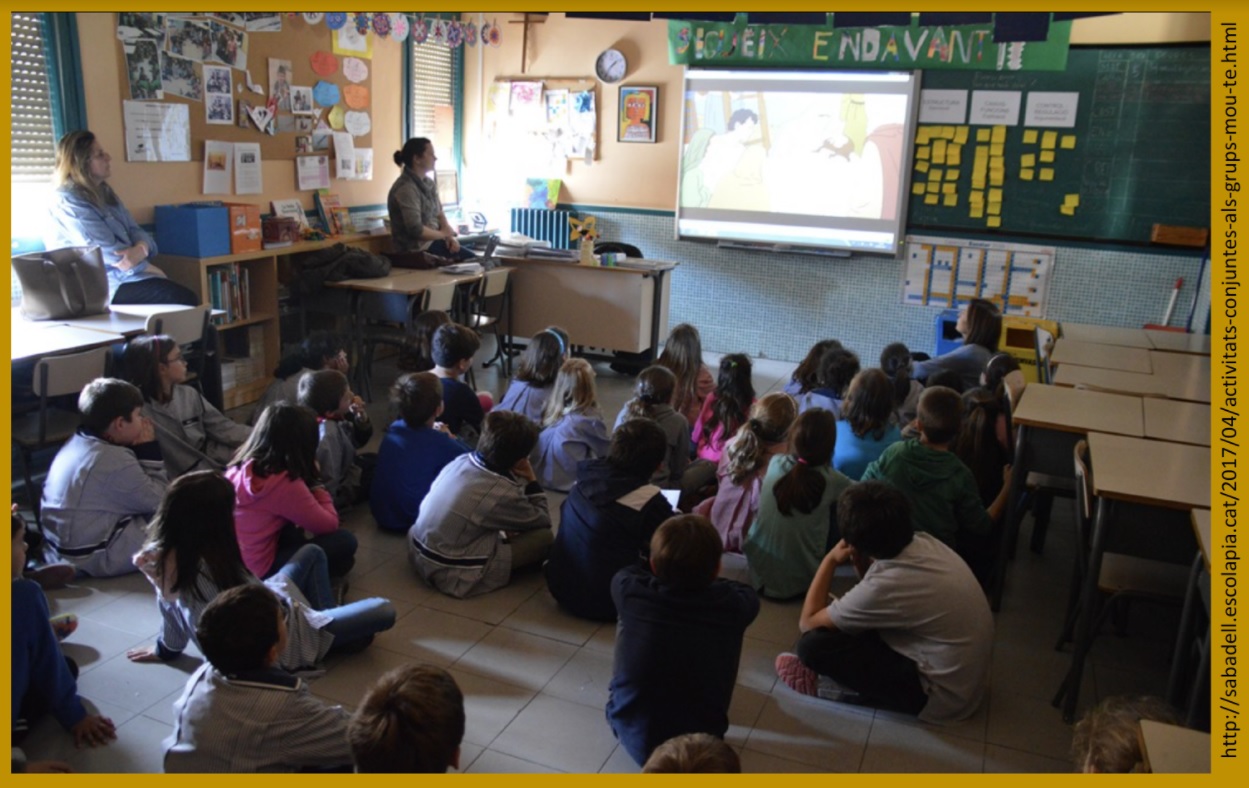The use of video in the classroom gains momentum thanks to young people

In Spain, more than 90 percent of adolescents have a smartphone and around 30% also have a laptop and a tablet. These three tools are important not only in the social life of young people but in their educational environment due to their increasingly widespread use in school. Among the most successful formats, especially in the last decade, is video. A project researching into this coordinated by UPF researchers reveals a very interesting characteristic: it is the young people who are promoting its use as an educational tool.
“In previous research we had seen the changes in education brought about by technology” explains Daniel Cassany, tenured lecturer of Discourse Analysis at the Translation and Language Sciences Management and Administration Unit. “The change was not so profound in schools since, although the computer replaced paper, the classes continued with the same practices. However, outside the classroom, young people had changed their ways of communicating and having fun, joining fanfic, otaku, manga clubs, musical groups, video games or sports, in a more creative and multimodal way, actively participating as content creators”.
In the last ten years, the development of smartphones, multimodal editing applications, and the boom in networks and repositories have been key for video to increase its importance as a communication and socialization tool. This research shows that “young people make creative, cooperative and personal use of these advances, in common social networks (Facebook, YouTube, Instagram, TikTok, etc.) but also in those of each country (VK, Douyin, Bibibili ) and in closed groups, translating television series, manga, fanfic or song lyrics, promoting their favourite groups or promoting the knowledge of cultural products of their liking. They do so to share their passions and at the same time learn languages, culture, technology and other content”.
“Young people make creative, cooperative and personal use of these advances, in common social networks (Facebook, YouTube, Instagram, TikTok, etc.) but also in those of each country (VK, Douyin, Bibibili ) and in closed groups, translating television series, manga, fanfic or song lyrics, promoting their favourite groups or promoting the knowledge of cultural products of their liking. They do so to share their passions and at the same time learn languages, culture, technology and other content”.
The project “FORVID: video as a language learning tool in and outside the classroom” aims to understand how young people (between 12 and 18 years of age) and teachers use video technology in formal (secondary school) teaching contexts or in informal learning environments. It also distinguishes three basic ways of taking advantage of video in the classroom: viewing third-party videos as a source of information (publishers, social networks, audiovisual media), producing videos by students as a learning task, and videos offered by teachers to their students to enrich the student experience.
The goals of the project include identifying and describing the practices of video production and consumption, exploring the use of writing (the basic study tool so far) in them, or documenting what type of learning is provided by this technology, in addition to offering resources, guidance and examples of good practices to improve the use of video in education.
To do so, the project has analysed over 200 videos made by teachers and students at secondary schools, in addition to in-depth interviews with 12 teachers who continuously use video production in their classes. This corpus of videos and interviews was the basis for later carrying out a macro-survey aimed at all secondary school teachers in Catalonia (1,230 schools, 54,255 teachers) to explore the presence of video in formal teaching contexts. The results of this survey, pending publication in the journal Revista Signos and other international newsletters on education and applied linguistics, offer a complete portrait of the presence of video in secondary school.
At least 92 percent of teachers use video in their classes as a source of information, and 70% have at some point proposed that their students make videos as an educational practice of their study programme. Hence, the traditional prevalence of paper and writing as basic working tools is shifting towards video, which is gradually gaining a foothold, as teachers become familiar with this technology and as students choose it to present their work, considering it more motivating and closer to them.
Video is present in all subjects, although it is more important in some (Language, Languages, Literature, Social Sciences) than in others (Mathematics, Natural Sciences). The results also show that videographic genres are being adapted to each curricular subject. Tutorials are used and recorded in Maths; in Natural Sciences, experiments are recorded in the laboratory or outside the classroom; in Languages and Language, we work with journalism (reports, news, etc.), and in Literature, booktuber-type videos, booktrailers or poetic video clips are produced.
The goals of the project include identifying and describing the practices of video production and consumption, exploring the use of writing (the basic study tool so far) in them, or documenting what type of learning is provided by this technology, in addition to offering resources, guidance and examples of good practices to improve the use of video in education.
Finally, the data also allow us to distinguish two very different types of videos: those that focus on verbal discourse, such as brief responses before the camera, screenshots with the voice of the trainee explaining themself, presentations with an embedded talking head; and videos that explore the possibilities of the medium in a more multimodal way, with visual elaborations, film narratives, post-editing, subtitles, etc.
“All of this improves the attitude towards collaboration and helps students take a more active role”, Cassany explains. “Video puts the recipient at the centre of the class as it enables them to contribute their previous experiences to the class as a whole. Thus, a boring academic practice changes into something authentic, real, a generator of further learning opportunities”.
